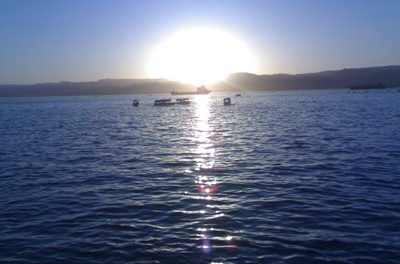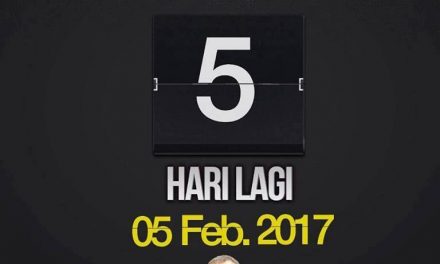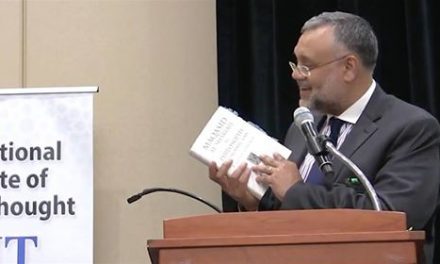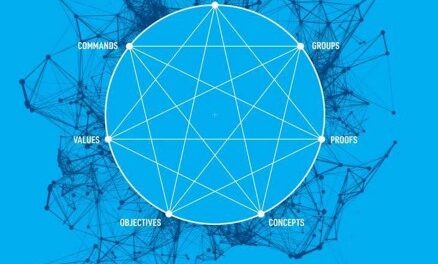
Current media coverage studies on Islam and Muslim societies and communities, especially on what is called 'political Islam' or 'Islamists', typically mention these terms: fundamentalist, strict, radical, moderate, progressive, and so on. These media reports draw from a large number of contemporary studies that offer 'typologies of Islamic ideologies.'
The purpose of these typologies is to define and assign certain labels to various groups, politicians, and thinkers, in order to decide strategies for 'dealing' with each. In these studies, 'ideology' is defined in a number of ways, clearly depending on the 'ideology' of the writers and the goals of their studies.
'Classic' classifications, such as those of H. Gibb, W. Smith, A. Hourani, L. Binder, H. Mintjes, and R. Humphrey, divide these 'ideologies' into the popular threefold typology of 'traditionalism/fundamentalism,' 'modernism,' and 'secularism'. (Binder 31-40; Mintjes 46-73)
But this classification is merely a classification of reactions to Western political domination in the Islamic world, rather than a classification of theories of the Islamic law. Moreover, this threefold classification itself is a reflection of the above writers' concepts of fundamentalism, modernity, and secularism, in the writers' own western context.
However, there is a number of more balanced approaches to these classifications, albeit not popular in mainstream media. The following are some examples:
John Esposito preferred to analyze "attitudes towards modernization and Islamic socio-political change," which he classified into conservative, neo-traditionalist, Islamic reformist, and secularist attitudes. (Esposito 216)
Yvonne Haddad also refers to "attitudes" or "tendencies", which she divided into neo-normativist, normativist, and acculturationist. (Haddad 1-14)
William Shepard considered the Islamic ideologies to be "responses to the western impact and of proposals for rehabilitating Muslim history", and came up with eight categories in a two-dimensional classification of "Islamic totalism" and "modernity". (Shepard 308)
John Voll analyzed "styles of action" in Islamic history, and classified them into adaptionist, conservative, and fundamentalist. (Voll 5)
Fazlur Rahman contrasted 'neo-fundamentalism' with 'Islamic modernism', which in his opinion, meant "the induction of change into the content of the Shariah" (Rahman 311-17). He also defined a 'post-modern fundamentalist' trend, whose "basic élan is anti-Western". (Ahmed 180)
Tariq Ramadan's typology does not follow the 'classic' three-fold classification. It rather identifies 'tendencies' in 'Islamic thought' and, hence, represents the streams of Islamic thought of various groups or movements more accurately than the other (classic) classifications. (Ramadan 24)
One of the most influential classifications was provided in RAND Corporation reports on Islamism (RAND 2004 Report). The 2004 report stated its objective, which is to contribute to the efforts of those who "want to prevent a clash of civilizations."
Similar to the above-mentioned typologies, the RAND report presents a four-class typology of four 'essential positions,' namely, fundamentalism, traditionalism, modernism, and secularism.
Yet, RAND's typology is of particular relevance to our research because these 'positions' represent, more or less, fiqhi [jurisprudential] positions over a number of contemporary issues.
These issues, which the report says "have become contentious in the Islamic world," are related to "political and individual freedom, education, the status of women, criminal justice, the legitimacy of reform and change, and attitudes towards the west." Examples of these issues are polygamy, hijab, flogging, public participation of women, and jihad.
The following is a brief summary of RAND's typology, followed by my comments.
1. Fundamentalism was divided into scriptural fundamentalism and radical fundamentalism:
a. Scriptural fundamentalists believe in an expansionist and aggressive version of Islam that is grounded in theology, imposes a strict public observance of Islam, and resorts to violence. In terms of Islamic law, their sources are defined as the Quran, Sunnah, charismatic leaders, and radical authors. Iranian revolutionaries, Saudi-based Wahhabis, and the Turkish Kaplan congregation were all included in this category.
b. Radical fundamentalists believe in an expansionist and aggressive version of Islam, and they can resort to violence and 'terrorism'. In terms of Islamic law, their sources are defined as the Quran, Sunnah, charismatic leaders, and Islamic philosophy. Al-Qaeda, Taliban, Hizb-ut-Tahrir, and other Islamic movements, are given as examples.
2. Traditionalism was divided into conservative traditionalism and reformist traditionalism.
a. Conservative traditionalists support a literal and strict form of Islam, but do not resort to violence. They resist modernity and change. Those who live in a traditional society are also described as less educated and less capable of distinguishing local customs from Islamic doctrine. In terms of Islamic law, their sources are defined as the Quran, Sunnah, local customs, and opinions of local clerics. Akbar Ahmad and Abdur-Rahman Doi are given as examples.
b. Reformist traditionalists are described as "more ready to make some concessions" in the literal application of orthodoxy through reform and re-interpretation, with an objective to conserve the "spirit of the law." In terms of Islamic law, their sources are defined as the Quran, Sunnah, scholars (including secular philosophers), modern laws and ethics, and community consensus. Yusuf al-Qaradawi and Ruqaiyyah Maqsood are provided as examples.
3. Modernism was not divided into further classes, and modernists are described as "ready to make far-reaching changes in the current orthodox understanding of Islam." They are also described as believers in the "historicity of Islam", that is, the report says, "Islam as practiced during the time of the Prophet is no longer valid." In terms of Islamic law, their sources are also defined as the Quran, Sunnah, scholars (including what the report called "secular philosophers"), and modern laws and ethics. Khaled Abou El-Fadl, Mohammad Shahrur, Serif Mardin, Bassam Tibi, and Nawal Saadawi were given as example modernists.
4. Secularism was divided into mainstream secularism and radical secularism.
a. Mainstream secularists "want the Islamic world to accept a division of church and state in the manner of western industrial democracies, with religion relegated to the private sphere."
b. Radical secularists are essentially 'anti-American' and 'extremely hostile.'
The following are my comments on the above categorization in point form.
1. This classification is by and large based on the above groups' current political positions on the United States foreign policy, especially its 'war on terror' policy. The typology is not clearly related to Islamic law, 'western values', the 'international community', or 'modernity', as the report claims.
2. Despite numerous practical and 'lifestyle' examples given in the report, the comparison does not capture the basic theoretical differences in these groups' versions of the fundamentals of Islamic law (usul), upon which they build their ideological stances.
3. It would be more accurate to identify Islamic positions in terms of theories, rather than specific personalities and names.
4. The Quran and prophetic traditions are mentioned amongst the sources for all trends (except for the secularists). However, it is essential to consider the detailed methodology of dealing with these two sources and the role of other sources (such as maslahah, 'public interest', and urf, 'custom'). In extreme/conservative groups, for example, patriarchal traditions do override the script on all practical levels. This also explains part of the report's surprise with the conservatives' 'considerable liberties' with the 'literal substance of Islam.' In modernist trends, for another example, the concept of maslahah often generates new approaches to politics that are rather pragmatic.
4. The differentiation between scriptural fundamentalists (for example, Wahhabis) and radical fundamentalists (for example, Al-Qaeda and Taliban) based on 'theology' is not accurate. All these groups have the same theological positions, which are based on the 'Salafi creed'. On the other hand, the positions of many 'Iranian revolutionaries' differ from the above groups on a number of theological issues (except for their general ideological stances from the United States). 'Iranian revolutionaries' themselves are divided across the spectrum of the Islamic positions, despite, again, their similar political stands on the current United States' foreign policies.
5. Despite the accurate analysis of the 'reformist traditionalist' strategy of 're-interpretation,' 'secular philosophers, modern laws and ethics' are certainly not amongst their 'sources of Islamic law.' However, the inclusion of secular philosophers and modern ethics amongst modernist scholars' sources is accurate. In fact, modern values are the essential core of the modernists' positions, based upon which scriptural re-interpretation itself is carried out.
6. It is more accurate to divide the modernist category into at least two categories, based on the difference between 're-interpretation' and 'radical criticism' strategies.
7. It would be more accurate to identify Islamic positions in terms of theories, rather than specific personalities and names. Many of the names associated with specific categories in the report actually shift their positions along two or more of the proposed categories, depending on the issue. For example, Sheikh Al-Qaradawi takes what could be classified as a 'traditionalist' position on issues he classifies as 'constant fundamentals', a 'modernist re-interpretation' position on issues he classifies as 'variable' (mutaghairat), and yet, what could be called a 'secular position' on issues he classifies as belonging to the "field of no legislation". (Al-Qaradawi, Madkhal, 200)
8. Despite the report's classification of the three of them under 'modernists,' Nawal Saadawi's position is radically different from Mohammad Shahrur's or Khaled Abou El-Fadl's. While Saadawi denounces "Islam, and all religions", for being patriarchal and restrictive towards women (Saadawi), Shahrur and Abou El-Fadl are clearly working within the Islamic juridical tradition, despite their feminist and modernist 're-interpretations.' (Abou El-Fadl and Shahrur)
Apart from the above typologies that are based on 'Islamic ideologies,' there are a few typologies of approaches based on the Islamic sources, which were presented by scholars who belong to a 'centrist' trend. Centrism (Wasatiyah, often inaccurately translated as 'moderation') argues a position of 'revitalization' or 'reform' (ihya, nahdah, or islah) between two 'extremes,' typically called 'literalism' (harf?yyah) and 'westernization' (taghrib). (Begoviç 49; Khatami 24)
The following is a summary.
1. Literalism or Stagnation: Literalists (often called 'neo-literalists') are usually described as considering the literal meanings of the scripts and 'ignoring their purposes' (Emara 5). Stagnation refers to the strict following of one of the Islamic madhahib, which is, in the 'neo-literalist' case, the Hanbali school in its modern Salafi/Wahhabi version. Wahhabism is an Islamic movement that was named after Imam Muhammad ibn Abdul-Wahhab, who led a movement in Arabia in order to "retain the pure and original form of Islam and purify it from all the Sufi innovations" (Aal-al-Sheikh 13-14). Abdul-Wahhab allied with Abdul-Aziz Aal-Saud, the founder of today's Saudi Arabia, and followed the Hanbali school, especially Ibn Taymiyah's opinions.
2. Secularization or Westernization: This is a label for 'radical critiques' of mainstream Islamic thought/law based on contemporary philosophy or methodology. Secularists are "emerging from a fundamental philosophical reference to western civilization" (Emara 5). They are also accused of abandoning the Islamic scripts (nusus) for the sake of their own reasoning.
3. Centrism or Renewal: This is a new school of Islamic law that argues a position between the above two positions. Generally, centrists do not restrict themselves to a specific traditional school of Islamic law, but choose from amongst their opinions in order to achieve people's interest (maslahah) in real life situations. (Al-Qaradawi, Al-Ijtihad; Begoviç; Emara)
Works Cited:
Aal-al-Sheikh, Abdul-Rahman. Fath Al-Majeed Sharh Kitab Al-Tawheed. Cairo: Mu'ssassat Qortobah.
Abou El-Fadl, Khalid. Speaking in God's Name. Oxford: Oneworld Publications, 2003.
Ahmed, Akbar S. Postmodernism and Islam: Predicament and Promise. 7th ed. London and New York: Routledge, 2004.
Al-Qaradawi, Yusuf. Al-Ijtihad Al-Muasir Bayna Al-Indibat Wal-Infirat. Cairo: Darul-Tawzi, 1994. ____. Madkhal Limaarifat Al-Islam. Cairo.
Begoviç Ali Ezzat. Al-I`lan Al-Islami. Trans. Mohamed Yusif Ads. 1st ed. Cairo: Dar al-Shorouk.
Binder, Leonard. Ideological Revolution in the Middle East. Ed. John Wiley. New York, 1964.
El-Saadawi, Nawal. God Dies by the Nile. 6th ed. London: Zed Books Ltd, 2002.
Emara, Mohammad. Tajdeed Al-Fikr Al-Islami. Cairo: Kitab Dar al-Hilal, 1981.
Esposito, John. Islam and Politics. Syracuse: Syracuse University Press, 1984.
Fazlur Rahman. Islam. 2nd ed. Chicago: University of Chicago Press, 1979.
Haddad, Yvonne. "The Islamic Alternative." The Link 15.4 (1982).
Khatami, Mohammad. Islam, Liberty, and Development. Johannesburg: Global Books, 2001.
Mintjes, H. "Mawlana Mawdudi's Last Years and the Resurgence of Fundamentalist Islam." Al-Mushir 22.2 (1980).
Ramadan, Tarek. Western Muslims and the Future of Islam. Oxford: Oxford University Press, 2004.
RAND 2004 Report.
Shahrur, Mohammed. Nahwa Usul Jadeedah.
Shepard, William. "Islam and Ideology: Towards a Typology." Int. Journal Middle Eastern Studies 19 (1987).
Voll, John. Islam: Continuity and Change in the Modern World. Boulder, Colorado: Westview Press, 1982.
=====
Source: www.onislam.net — Ask about Islam — Jasser Auda.





